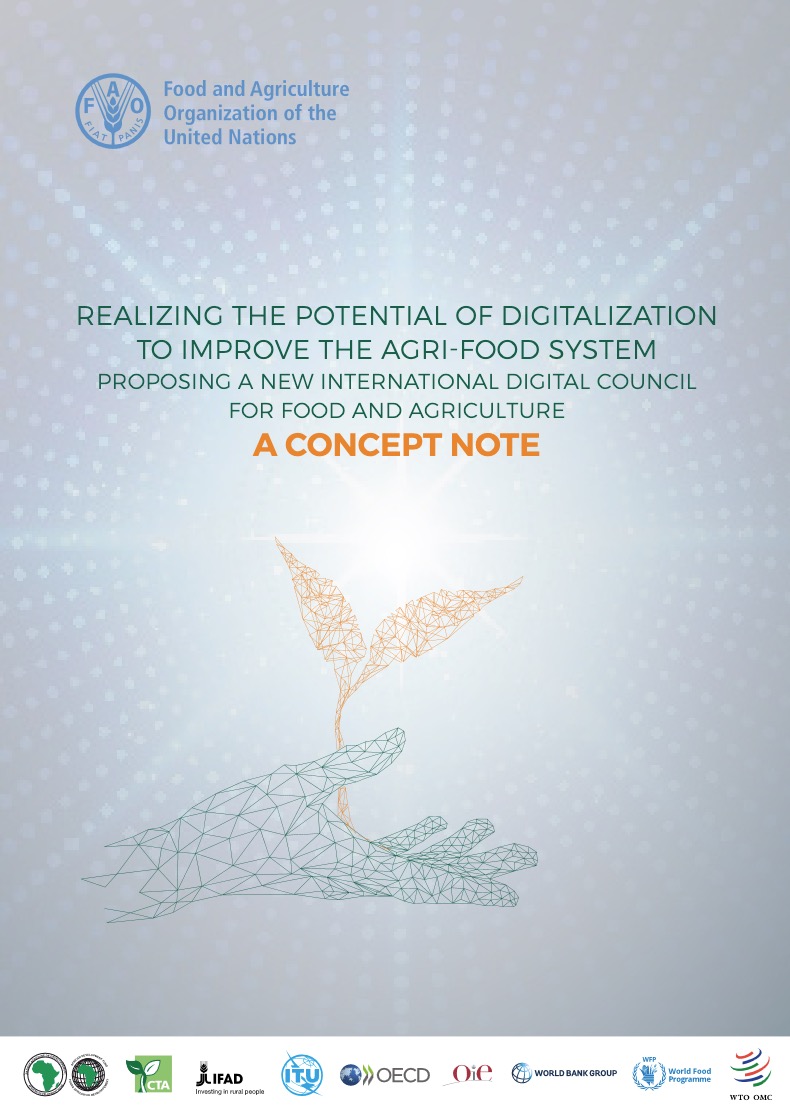
Realizing the potential of digitalization to improve the agri-food system: Proposing a new International Digital Council for Food and Agriculture. A concept note
08/06/2020
The global agri-food system continues to face considerable challenges in being able to provide enough food of adequate quality to feed an ever-growing, aging, and migrating population. The world is also changing at a fast pace with the emergence of an array of technologies. Digital technologies offer unique opportunities for improving food production and trade, especially to smallholder farmers, and in helping to achieve the Sustainable Development Goals
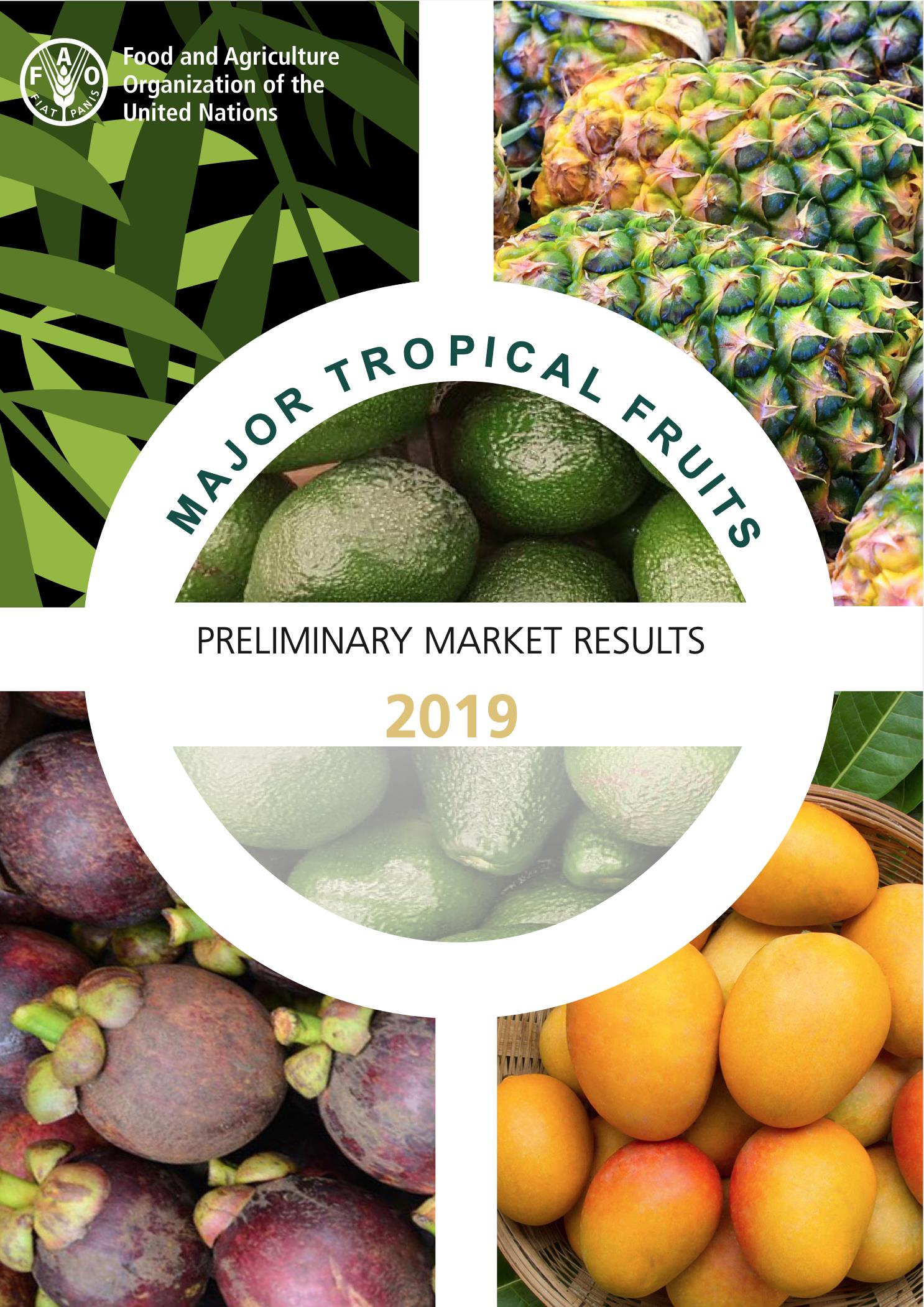
Major tropical fruits - Preliminary market results 2019
02/06/2020
The Tropical Fruits Market Review is issued on an annual basis to Members and Observers of the Sub-Group on Tropical Fruits of the Intergovernmental Group on Bananas and Tropical Fruits, which is a subsidiary body of the Committee on Commodity Problems (CCP). This document provides preliminary estimates for the 2019 market situation for the following major tropical fruits: Avocado, Mango, Papaya and Pineapple.
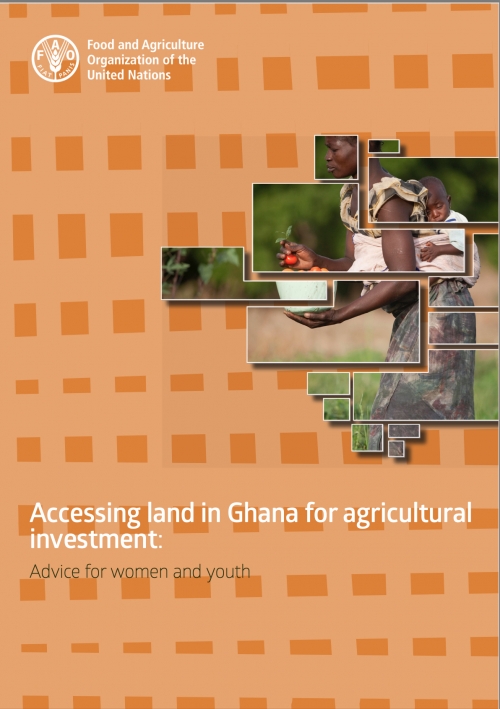
Accessing land in Ghana for agricultural investment: Advice for women and youth
01/06/2020
The purpose of this brief is to provide advice on how women and youth may access farmland in Ghana. Following the appropriate process can help them to identify and address potential problems and avoid conflicting claims and litigation. It can also help them to ensure that the rights of all legitimate tenure rights-holders are respected.
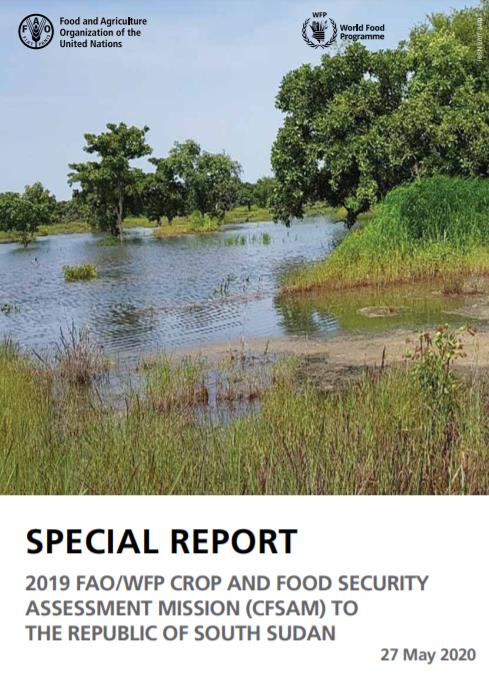
Special Report - 2019 FAO/WFP Crop and Food Security Assessment Mission to the Republic of South Sudan
27/05/2020
An FAO/WFP Crop and Food Security Assessment Mission (CFSAM) visited South Sudan from 15 to 20 December 2019 to estimate the cereal production during 2019 and assess the overall food security situation in the country. The CFSAM reviewed the findings of several Crop Assessment Missions conducted from June to December 2019 at planting and harvest time in different agro‑ecological zones of the country.
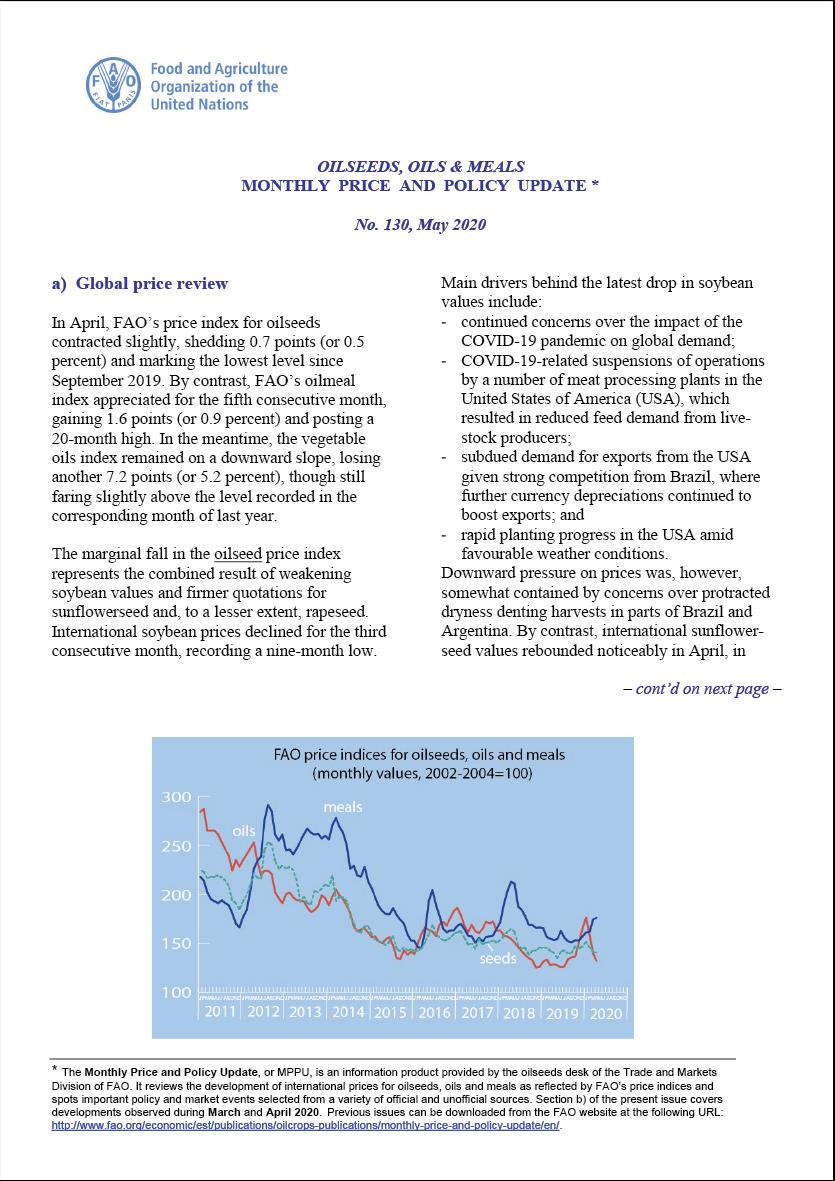
Oilseeds, Oils & Meals. Monthly Price and Policy Update No.130, May 2020
13/05/2020
In April, FAO’s price index for oilseeds contracted slightly, shedding 0.7 points (or 0.5 percent) and marking the lowest level since September 2019. By contrast, FAO’s oilmeal index appreciated for the fifth consecutive month, gaining 1.6 points (or 0.9 percent) and posting a 20-month high. In the meantime, the vegetable oils index remained on a downward slope, losing another 7.2 points (or 5.2 percent), though still faring slightly above the level recorded in the corresponding month of last year.
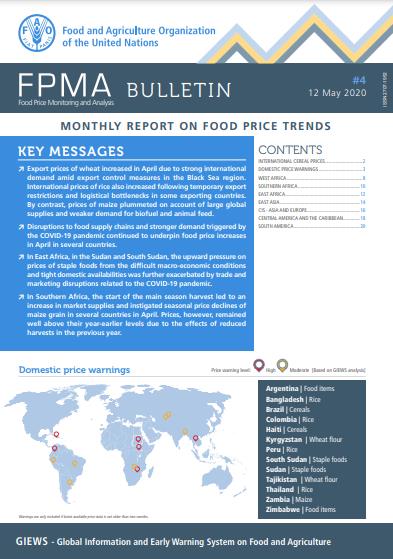
Food Price Monitoring and Analysis (FPMA) Bulletin # 4, 12 May 2020
12/05/2020
Export prices of wheat increased in April due to strong international demand amid export control measures in the Black Sea region. International prices of rice also increased following temporary export restrictions and logistical bottlenecks in some exporting countries. By contrast, prices of maize plummeted on account of large global supplies and weaker demand for biofuel and animal feed. Disruptions to food supply chains and stronger demand triggered by the COVID-19 pandemic continued to underpin food price increases in April in several countries. In East Africa, in the Sudan and South Sudan, the upward pressure on prices of staple foods from the difficult macro-economic conditions and tight domestic availabilities was further exacerbated by trade and marketing disruptions related to the COVID-19 pandemic. In Southern Africa, the start of the main season harvest led to an increase in market supplies and instigated seasonal price declines of maize grain in several countries in April. Prices, however, remained well above their year-earlier levels due to the effects of reduced harvests in the previous year.
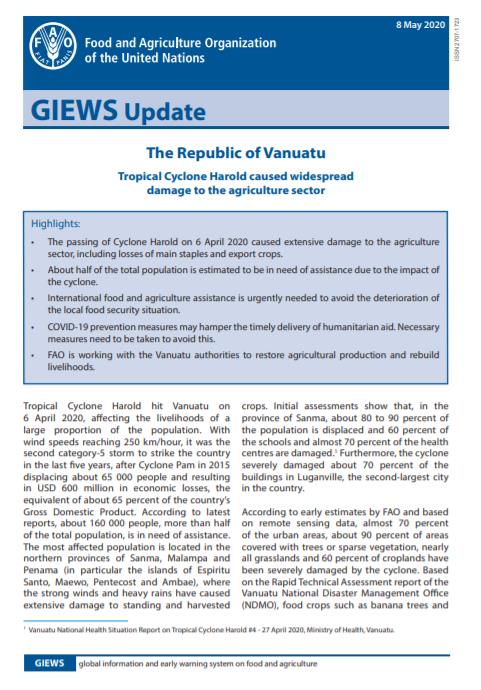
GIEWS Update - The Republic of Vanuatu, 8 May 2020
08/05/2020
The passing of Cyclone Harold on 6 April 2020 caused extensive damage to the agriculture sector, including losses of main staples and export crops. About half of the total population is estimated to be in need of assistance due to the impact of the cyclone. International food and agriculture assistance is urgently needed to avoid the deterioration of the local food security situation. COVID-19 prevention measures may hamper the timely delivery of humanitarian aid. Necessary measures need to be taken to avoid this. FAO is working with the Vanuatu authorities to restore agricultural production and rebuild livelihoods.
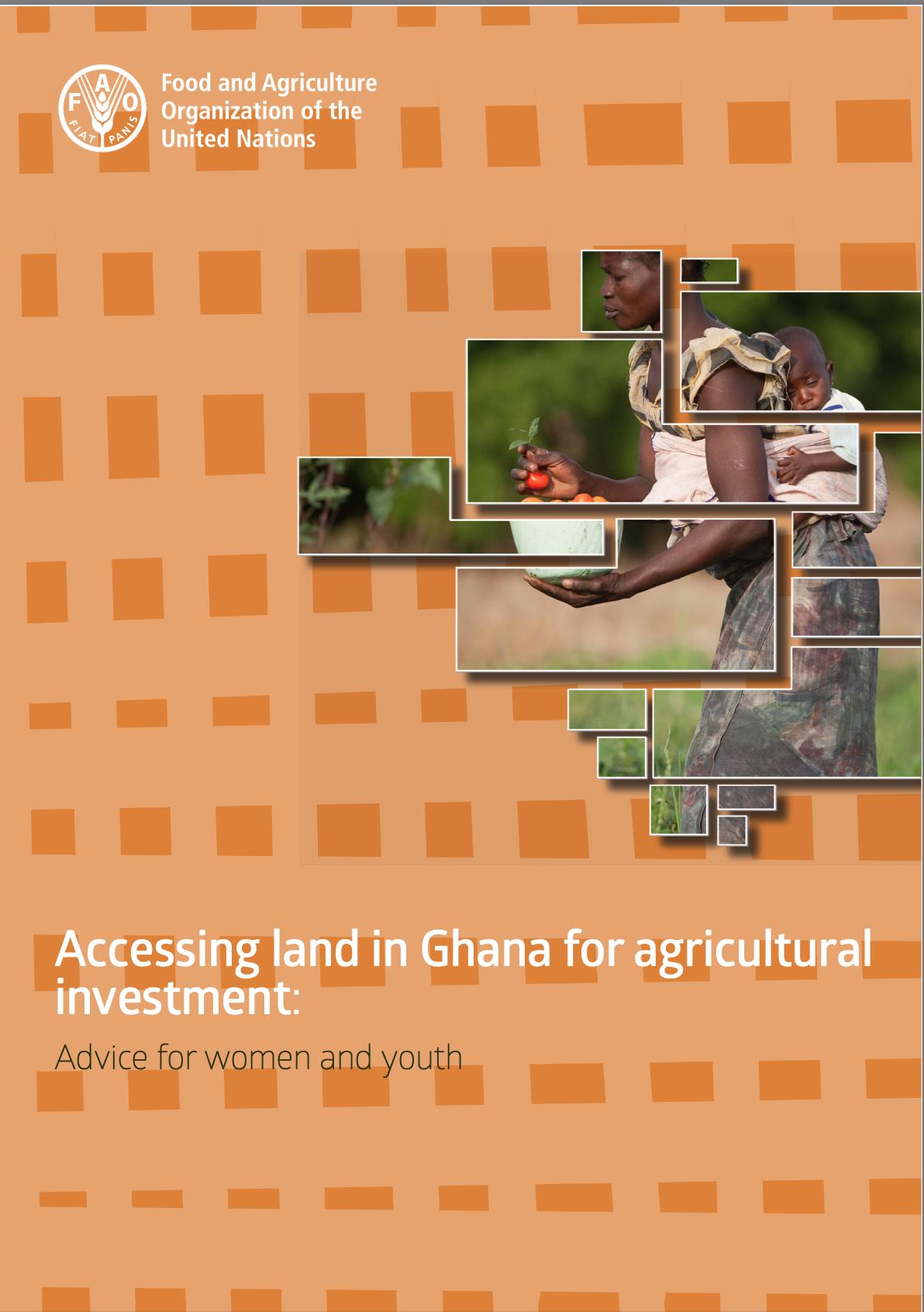
Accessing land in Ghana for agricultural investment: Advice for women and youth
06/05/2020
The purpose of this brief is to provide advice on how women and youth may access farmland in Ghana. Following the appropriate process can help them to identify and address potential problems and avoid conflicting claims and litigation. It can also help them to ensure that the rights of all legitimate tenure rights-holders are respected.
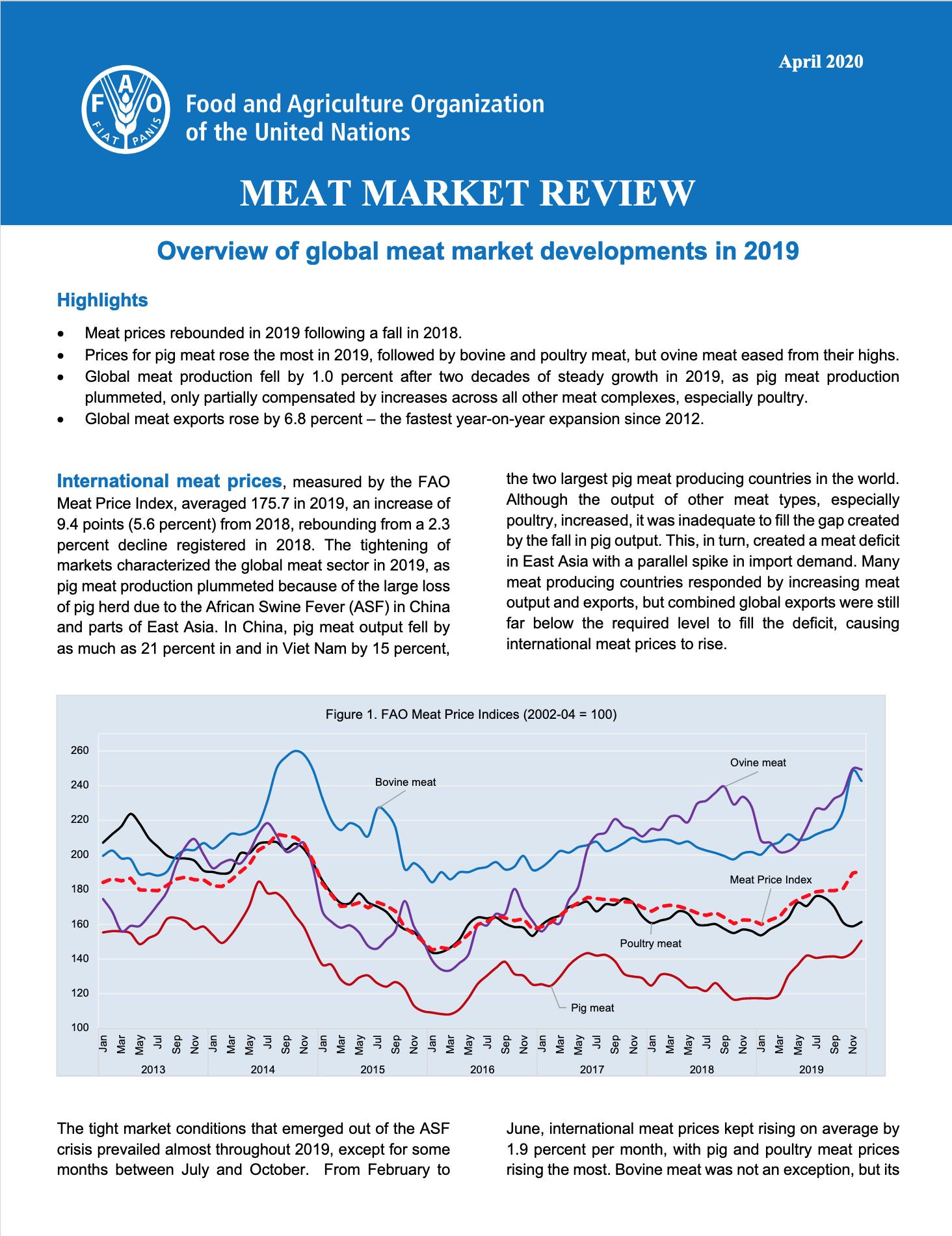
Meat Market Review - Overview of global meat market developments - April 2019
30/04/2020
This publication provides an update on production, trade and price movements of meat products (bovine, ovine, pig and poultry meat). It aims to provide a clear snapshot view of key changes and underlying determinants of world dairy markets. It is the only publication that covers meat market developments in the entire world that is also updated regularly; it supports the division’s objective in providing market information relevant for policy makers, helping them in the process to take data-based policy decisions. • Average meat prices rebounded in 2019 following a fall in 2018. • Prices for pig meat rose the most in 2019, followed by bovine and poultry meat, but ovine meat eased from their highs. • Global meat production fell by 1.0 percent after two decades of steady growth in 2019, as pig meat production plummeted, only partially compensated by increases across all other meat complexes, especially poultry. • Global meat exports rose by 6.8 percent – the highest rate to record since 2012.
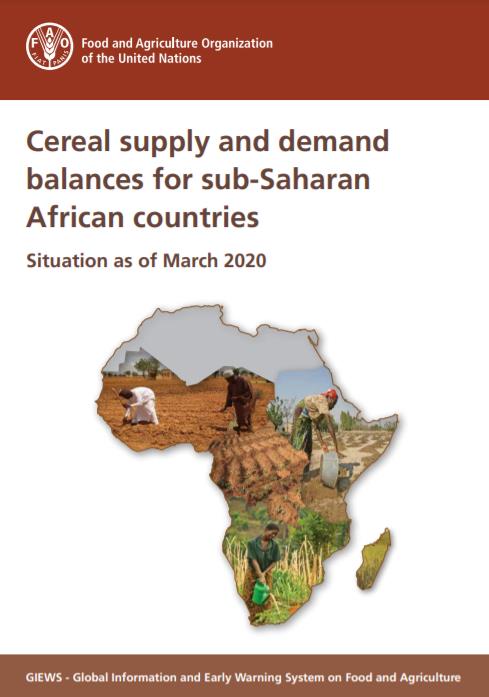
Cereal supply and demand balances for sub-Saharan African countries - No.1, April 2020
29/04/2020
The FAO/GIEWS Country Cereal Balance System (CCBS) is a database of annual supply and utilization balances for main cereals, covering all countries of the world. It has been maintained by FAO/GIEWS since 1980 and is updated on a continual basis. This statistical report, which is a subset of CCBS data, presents the current year‘s cereal supply and demand balances for all sub-Saharan African countries. This report is complementary to the FAO/GIEWS report Crop Prospects and Food Situation and is published four times a year, with the same schedule.
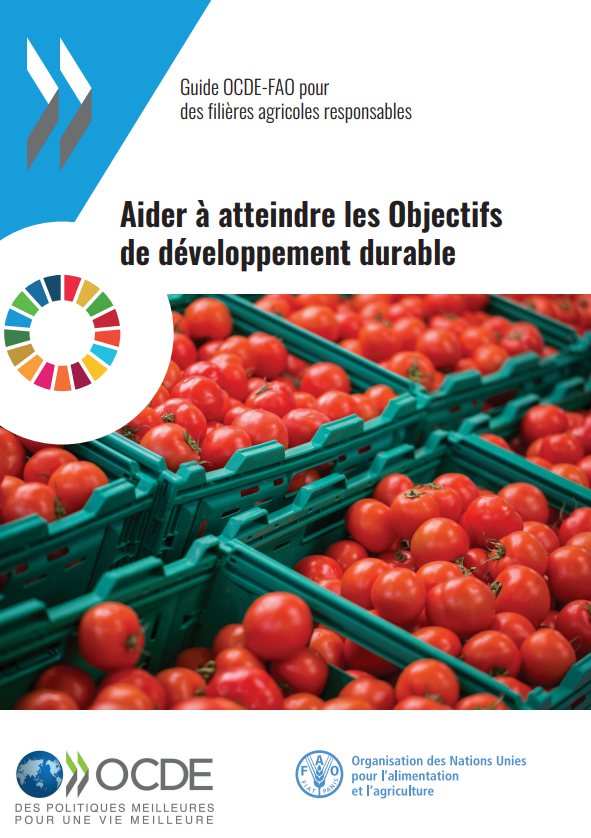
The OECD-FAO Guidance for Responsible Agricultural Supply Chains: Helping achieve the Sustainable Development Goals
15/04/2020
This publication describes how the risk-based due diligence framework recommended by the OECD-FAO Guidance for Responsible Agricultural Supply Chains (OECD-FAO Guidance) can help businesses to: identify and address the impacts of operations along their value chains and ensure that their actions and inactions are not undermining the SDGs, and; systematically manage risks and demonstrate their contribution to the SDGs in a measurable way.

The OECD-FAO Guidance for Responsible Agricultural Supply Chains: Helping achieve the Sustainable Development Goals
15/04/2020
This publication describes how the risk-based due diligence framework recommended by the OECD-FAO Guidance for Responsible Agricultural Supply Chains (OECD-FAO Guidance) can help businesses to: identify and address the impacts of operations along their value chains and ensure that their actions and inactions are not undermining the SDGs, and; systematically manage risks and demonstrate their contribution to the SDGs in a measurable way.
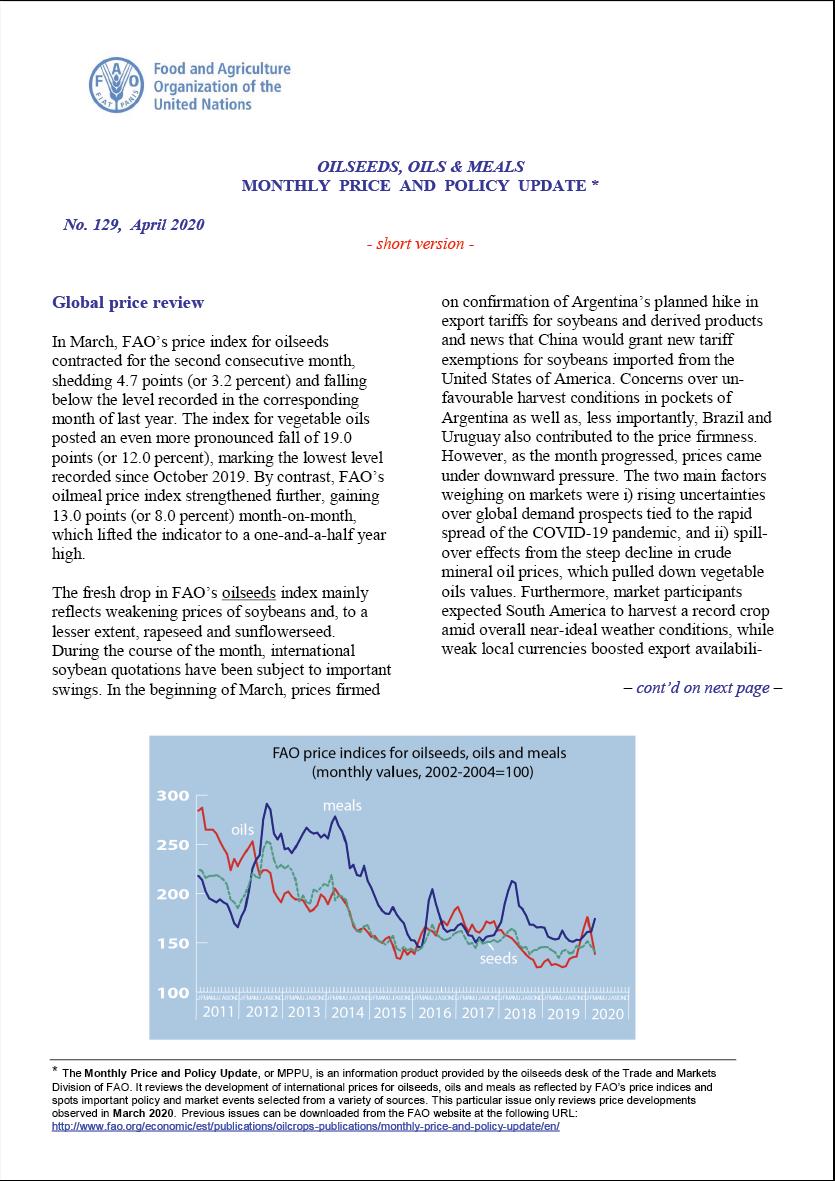
Oilseeds, Oils & Meals. Monthly Price and Policy Update No.129, April 2020
15/04/2020
In March, FAO’s price index for oilseeds contracted for the second consecutive month, shedding 4.7 points (or 3.2 percent) and falling below the level recorded in the corresponding month of last year. The index for vegetable oils posted an even more pronounced fall of 19.0 points (or 12.0 percent), marking the lowest level recorded since October 2019. By contrast, FAO’s oilmeal price index strengthened further, gaining 13.0 points (or 8.0 percent) month-on-month, which lifted the indicator to a one-and-a-half year high.
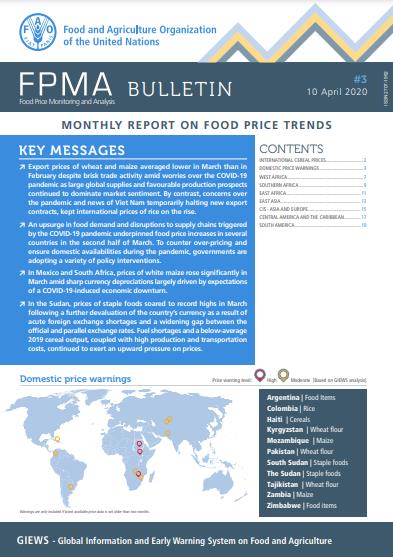
Food Price Monitoring and Analysis (FPMA) Bulletin # 3, 10 April 2020
10/04/2020
Export prices of wheat and maize averaged lower in March than in February despite brisk trade activity amid worries over the COVID-19 pandemic as large global supplies and favourable production prospects continued to dominate market sentiment. By contrast, concerns over the pandemic and news of Viet Nam temporarily halting new export contracts, kept international prices of rice on the rise. An upsurge in food demand and disruptions to supply chains triggered by the COVID-19 pandemic underpinned food price increases in several countries in the second half of March. To counter over-pricing and ensure domestic availabilities during the pandemic, governments are adopting a variety of policy interventions. In Mexico and South Africa, prices of white maize rose significantly in March amid sharp currency depreciations largely driven by expectations of a COVID-19-induced economic downturn. In the Sudan, prices of staple foods soared to record highs in March following a further devaluation of the country’s currency as a result of acute foreign exchange shortages and a widening gap between the official and parallel exchange rates. Fuel shortages and a below‑average 2019 cereal output, coupled with high production and transportation costs, continued to exert an upward pressure on prices.

Special Report - 2019 FAO/WFP Crop and Food Security Assessment Mission to the Lao People’s Democratic Republic
09/04/2020
A joint FAO/WFP Crop and Food Security Assessment Mission (CFSAM) visited the Lao People’s Democratic Republic from 16 November to 5 December 2019 at the request of the Ministry of Agriculture and Forestry. The request was prompted by concerns over the impact of unfavourable weather conditions during the second half of 2019 on the main season crops. The Mission estimated the 2019 cereal production and the import requirements during the 2020 marketing year (January/December) and assessed the overall food security situation in the country.
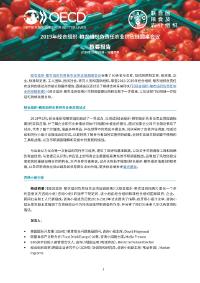
Summary report: 2019 OECD-FAO Roundtable on Responsible Agricultural Supply Chains
03/04/2020
This publication provides a summary of an OECD-FAO Roundtable on Responsible Agricultural Supply Chains held in Paris, 29 October 2019. The Roundtable convened over 60 participants to review the findings and final report of the 2018-2019 OECD-FAO Pilot on Responsible Agricultural Supply Chains.
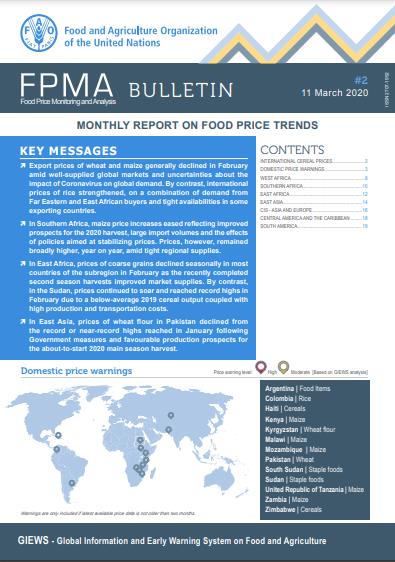
Food Price Monitoring and Analysis (FPMA) Bulletin # 2, 11 March 2020
11/03/2020
Export prices of wheat and maize generally declined in February amid well-supplied global markets and uncertainties about the impact of Coronavirus on global demand. By contrast, international prices of rice strengthened, on a combination of demand from Far Eastern and East African buyers and tight availabilities in some exporting countries. In Southern Africa, maize price increases eased reflecting improved prospects for the 2020 harvest, large import volumes and the effects of policies aimed at stabilizing prices. Prices, however, remained broadly higher, year on year, amid tight regional supplies. In East Africa, prices of coarse grains declined seasonally in most countries of the subregion in February as the recently completed second season harvests improved market supplies. By contrast, in the Sudan, prices continued to soar and reached record highs in February due to a below-average 2019 cereal output coupled with high production and transportation costs. In East Asia, prices of wheat flour in Pakistan declined from the record or near-record highs reached in January following Government measures and favourable production prospects for the about-to-start 2020 main season harvest.
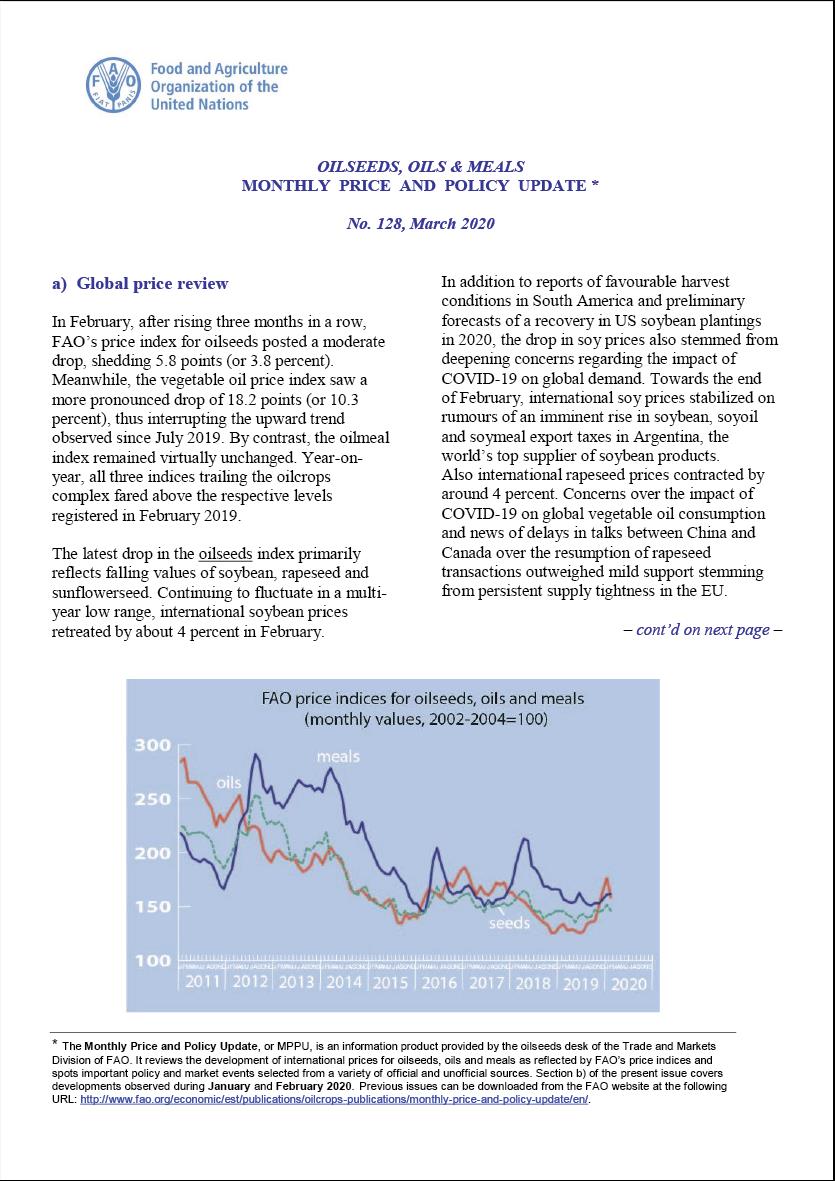
Oilseeds, Oils & Meals. Monthly Price and Policy Update No.128, March, 2020
11/03/2020
In February, after rising three months in a row, FAO’s price index for oilseeds posted a moderate drop, shedding 5.8 points (or 3.8 percent). Meanwhile, the vegetable oil price index saw a more pronounced drop of 18.2 points (or 10.3 percent), thus interrupting the upward trend observed since July 2019. By contrast, the oilmeal index remained virtually unchanged. Year-on-year, all three indices trailing the oilcrops complex fared above the respective levels registered in February 2019.
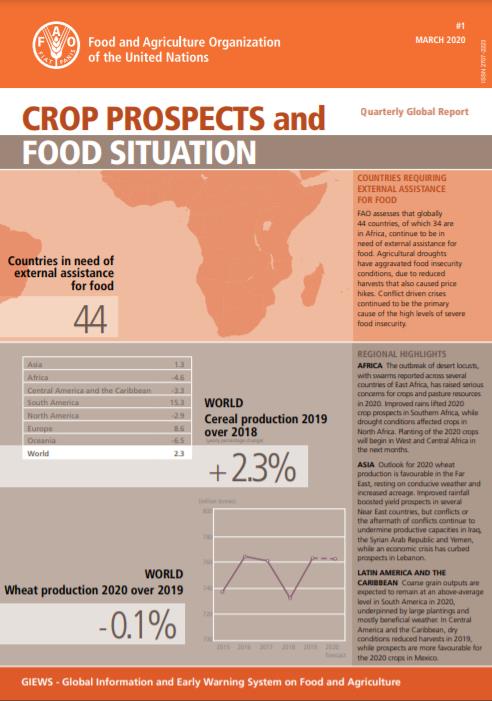
Crop Prospects and Food Situation - Quarterly Global Report, No. 1, March 2020
05/03/2020
FAO assesses that globally 44 countries, of which 34 are in Africa, continue to be in need of external assistance for food. Agricultural droughts have aggravated food insecurity conditions, due to reduced harvests that also caused price hikes. Conflict driven crises continued to be the primary cause of the high levels of severe food insecurity.

